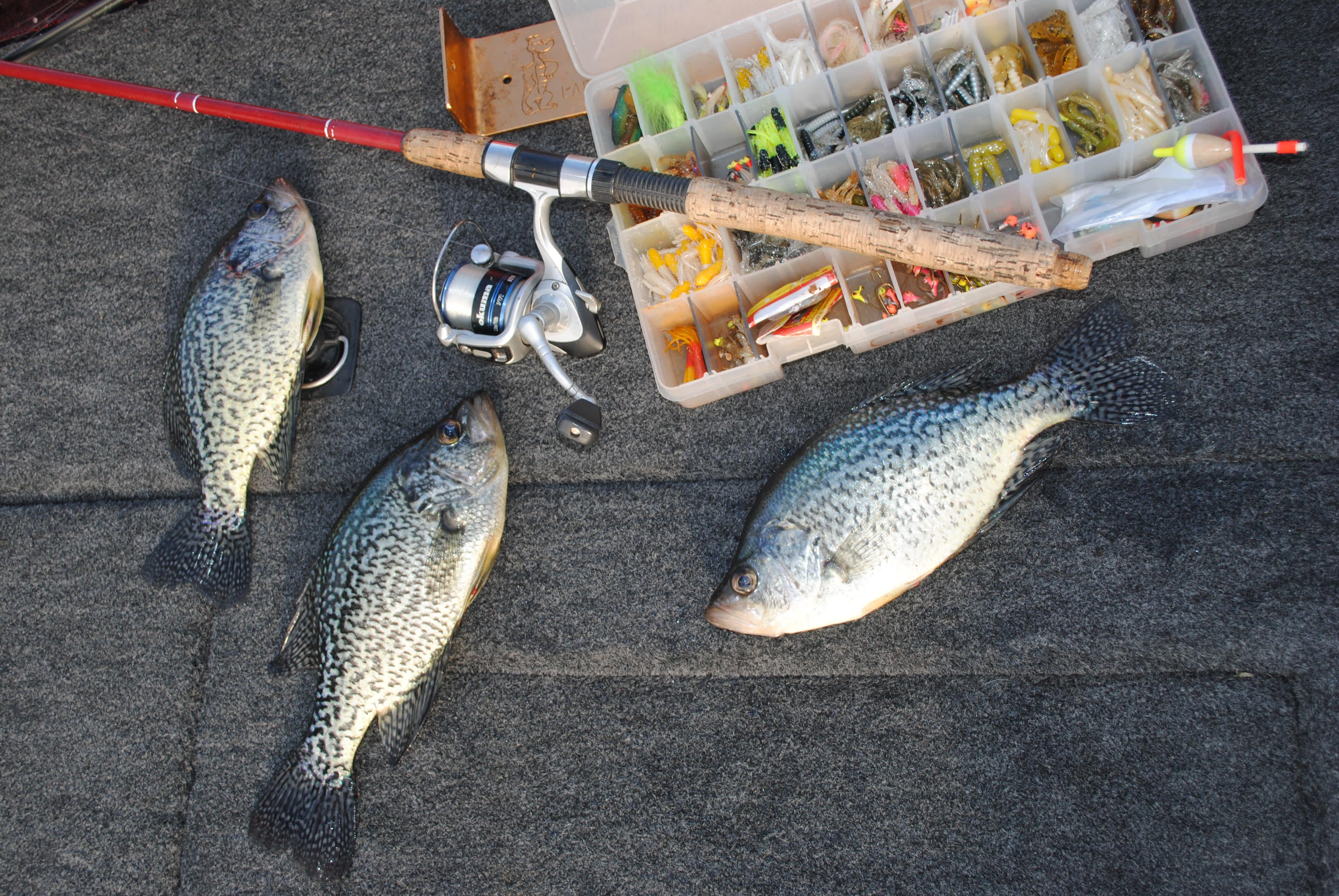Chicken Feathers for Crappie on Michigan’s Diamond Lake
Bob Gwizdz 05.07.13

Things weren’t going at all as planned. An hour into our afternoon trip we had four crappies in the livewell.
It wasn’t that we weren’t catching fish. Within minutes after we started, I brought a nice largemouth to the boat. Minutes later, Jim Horn reeled in a northern pike right at the legal size limit. Terry Smith, Horn’s regular bass fishing partner, caught a bass, then a big rock bass. I had a big pike take my jig away. Horn caught another bass.
That’s how it was going. Lots of fish, but where were the crappies?
“They’re being persnickety,” Horn said.
It was the first time I’d ever fished with Smith (though we did enjoy an Indiana pickle field that was concentrating doves one day about a decade ago) but I’ve shared a boat with Horn a couple of days each year for the last two decades and only once did we fail to get it done: in February on the St. Joseph River, when the walleyes we were seeking seemed to disappear. Otherwise, Horn has always been money.
We were using Horn’s traditional cold-water spring technique–a small jig under a bobber, fished over and around weed beds. We were on Diamond Lake where Horn and I enjoyed absolutely stupid crappie fishing last year. The difference? Well, for one thing, we were fishing into the teeth of a 20-mile-an-hour wind this time. But we were also a month later than we’d fished last year, mid-April instead of mid-March, though the water temperature (low to mid 40s) was probably lower than it was a month earlier in 2012.
“I think the wind’s got that jig bouncing around too much for them,” said Horn, who is the best crappie fisherman I know living north of the Mason-Dixon Line. “They just don’t seem to want to chase it.”

We moved around the lake, looking for weed beds that came up maybe halfway to the surface in about 10 feet of water. We were in Smith’s boat and he didn’t have all the weed beds that Horn knows about programmed into his electronics. Because of the wind and the overcast skies the weeds were hard to spot. Still, we’d catch one here, one there, never really dialing them in.
By the end of the second hour, we had nine.
Along the way we’d made one change; instead of the multi-tailed tube jigs that Horn prefers, we’d all started throwing small white jigs dressed with chicken feathers. Smith had started with them, while Horn and I used plastics, and he was catching more crappies than we were.
“When it gets tough, chicken feathers are better,” said Horn, who has always fished tube-style plastics in the years I’ve known him. “I can’t tell you why, but you can see it yourself.”
True. Our crappie-catch rate picked up slightly with all of us using the feathers. And it didn’t slow the non-target-species bite, either.
We were fishing with four-pound test line; Horn said he might use two-pound line if we were just swimming the jigs, but he upsizes a little bit when using a bobber to prevent break-offs. We fished with the jigs about four or five feet below the bobber so they were pretty much above the top of the weed line. Horn’s mantra is: stay above them, crappie will come up to take a bait.
Finally, Horn said it was time to change plans. We got off the main lake and went back into a canal and started fishing boat docks. The results? Bass. Lots of bass. One bluegill. But no crappies.
When we got back out on the lake, the wind had slowed and the sun was trying to burn through the overcast. Horn suggested we give it one more try. The weed beds were more visible and easier to stay on. We pulled up on a weed bed and Horn’s bobber went down. Nice crappie. Smith caught one. Horn caught another. And another. I caught one. Had we finally dialed it in?
We beat up on that weed bed and moved to another. Same drill; they were there and willing. In an hour we did more than we had in the previous three.
Horn said it was the wind.

“We just couldn’t keep our baits slow enough for them,” he said “They were moving too fast. Now we’re able to hold the boat and slow the bait down.”
We fished one more weed bed and the crappies came pretty regularly (and we continued to catch bass, too). They were nice fish–some honest 12 inchers among the 10s and 11s. Oh, there were some squeakers, too, that we tossed back, but the fish were running a pretty nice size.
Well past dinner time, we called it. We had more than 40 crappies–all the size I’d have kept back when I lived in the South–in the livewell.
Horn was pleased enough.
“For the conditions, we did decent,” he said. “It’s short of what we did last year, but the conditions were a lot worse.”
Amen.
I took a dozen home and that night, as I cleaned them, I noticed the females contained fully developed egg sacs, but they were still pretty hard. I’d guess they were still weeks away from spawning (which, according to the popular literature, takes place when the water temperatures hit the mid 60s). The way this spring is going, that may not be until August.
The take-away? If I were a gambling man, I’d bet we’ll have good crappie fishing well into May this year, possibly longer.
For more information on Michigan fishing go to michigan.org.

